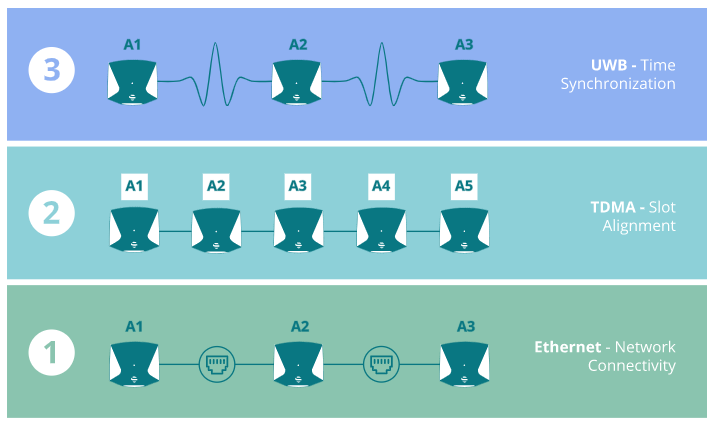RTLS System Synchronization
The third step is to set the best TDMA synchronization protocol. Synchronization is the key to localization. Find more details about RTLS System Synchronization on the page below and in related subsections.
RTLS Synchronization Layers
To understand RTLS System synchronization, it is important to have a look at the RTLS System layer model. In the picture below, you can see the layer model of the RTLS model:
It defines Anchor network connectivity on the bottom, and goes up through UWB and TDMA Synchronization, to features like True Location or Presence Detection, up to API as the Top Layer.
Synchronization refers to the bottom three layers, those 3 layers represent the Synchronization Layer Model:
- Ethernet - Network Connectivity
Provides fundamental connectivity via Ethernet or Wi-Fi backhaul from RTLS Studio to Anchors. - TDMA - Slot Alignment
Provides Time-Division Multiple Access for Anchors via TCP in microseconds (μs). TDMA sync allows reordering, shrinking, and expanding time slots, which provide robust and optimal synchronization for installation with a lot of Masters. - UWB - Time Synchronization
Provides sub-nanosecond (ns) UWB synchronization for positioning among anchors.
The key layers for synchronization are:
- Ethernet - Network Connectivity

